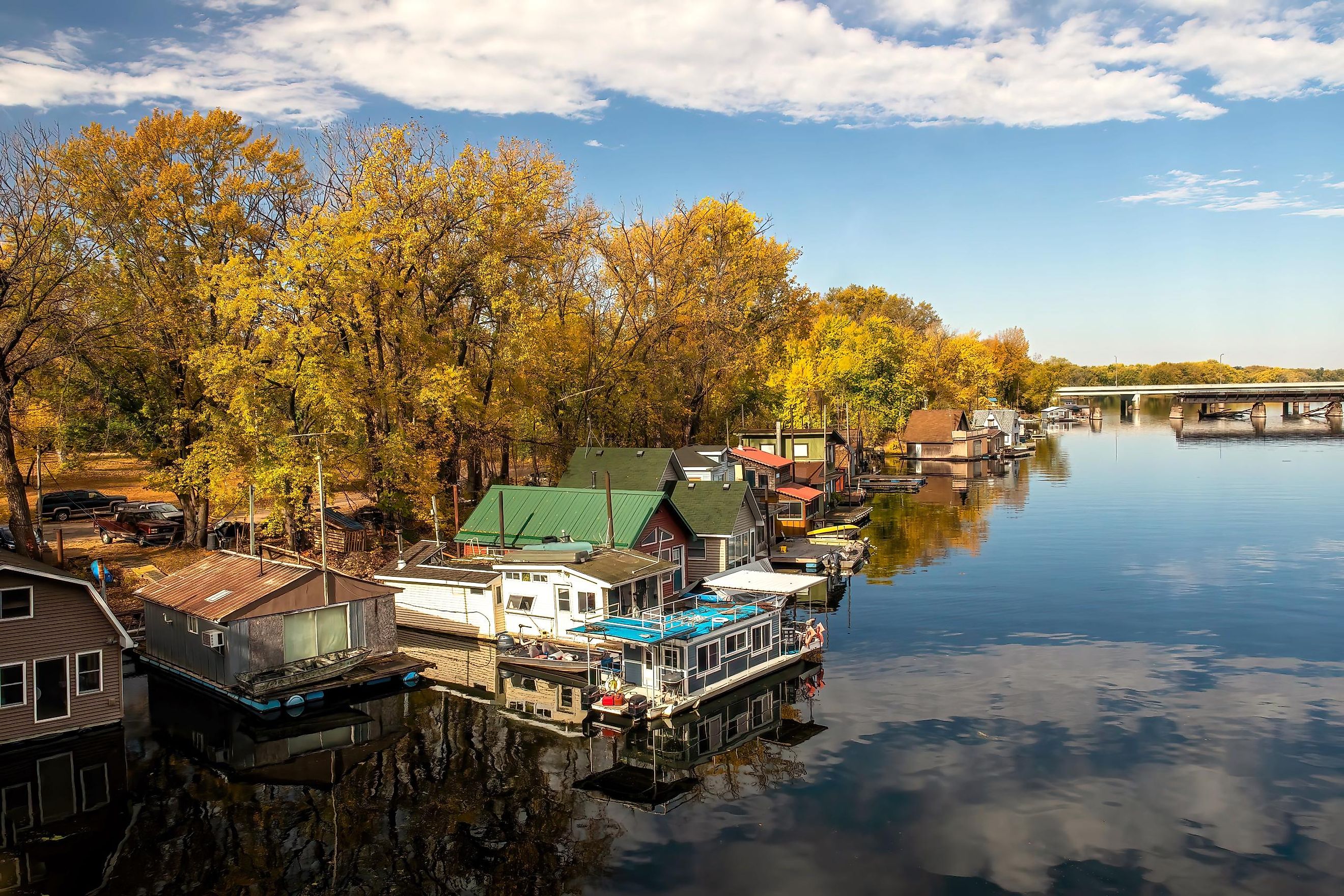
9 Of The Most Quaint Small Towns In Minnesota
Minnesota, the northern midwestern state, offers charms and attractions for the most seasoned tourist. For visitors as well as locals, the state is consistently well-reviewed, offering a diverse range of attractions that the visitors can sample for themselves. The state is so popular that a 2023 study named it The United States' "best state for millennials." If other states can also compete for that title, there is no doubt that Minnesota merits a trip. Its natural wonderlands are some of the best in the country, while the state's history, culture, museums, and seasonal festivals will leave no traveler unsatisfied. As these small towns show, Minnesota is a quaint destination that deserves its great reputation.
Walker
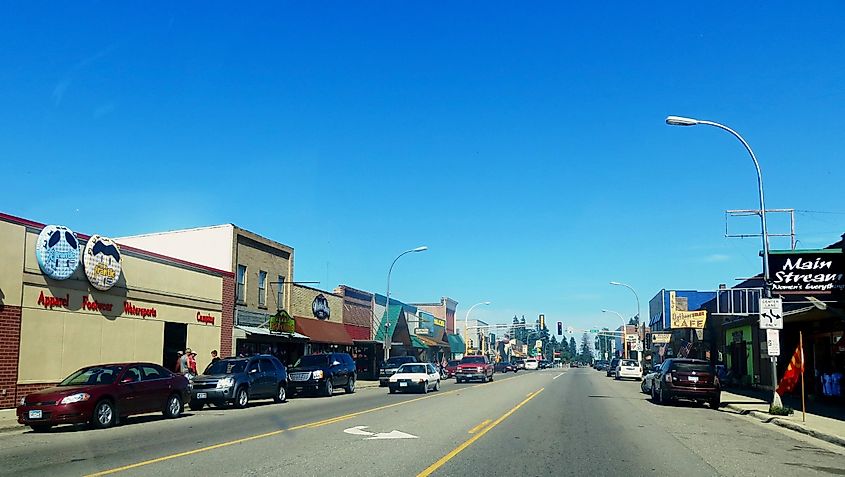
Walker, with a population of about 1,000, is located on the north-central shores of Leech Lake, a haven for water-sport athletes and outdoor adventurers that was once a logging town. Leech Lake, as one of Minnesota's largest and most beautiful water bodies, has many activities to offer: fishing, boating, and water sports. The town's charming downtown area features one-of-a-kind shops, local art galleries, and dining options by the lake. The town hosts events like the Eelpout Festival, an eccentric winter celebration featuring ice fishing and other festivities. The Chippewa National Forest surrounds the area, providing excellent opportunities for bird-watching, hiking, and outdoor photography.
Grand Marais
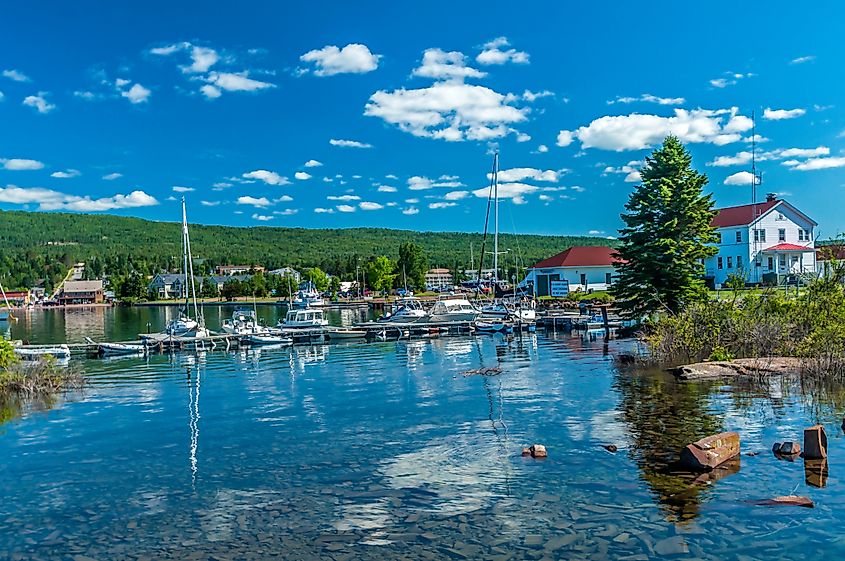
Grand Marais, with 1,400 residents, is a quaint harbor hamlet in the state's northeast corner, on the banks of Lake Superior and less than forty miles from the Canada-US border. The city has an artistic and free-spirited vibe, not least for its art festival held every July. Otherwise, the town maintains an outsized social calendar: it marks each year's summer and winter solstices, and every October, puts on a "Moose Fest" to celebrate the large local animal. Visitors at all times of the year can check out traditional crafts and artisanal production, such as blacksmithing, and bring unique handmade goods home as souvenirs.
For nature seekers, the town offers five beaches and the Devil Track River Canyon, an 8.7-mile-long river flowing southeast into Lake Superior, allowing for fly-fishing and cold-season ice climbing. Grand Marais serves as a base for the Superior National Forest, the largest national forest east of the Mississippi River.
Red Wing
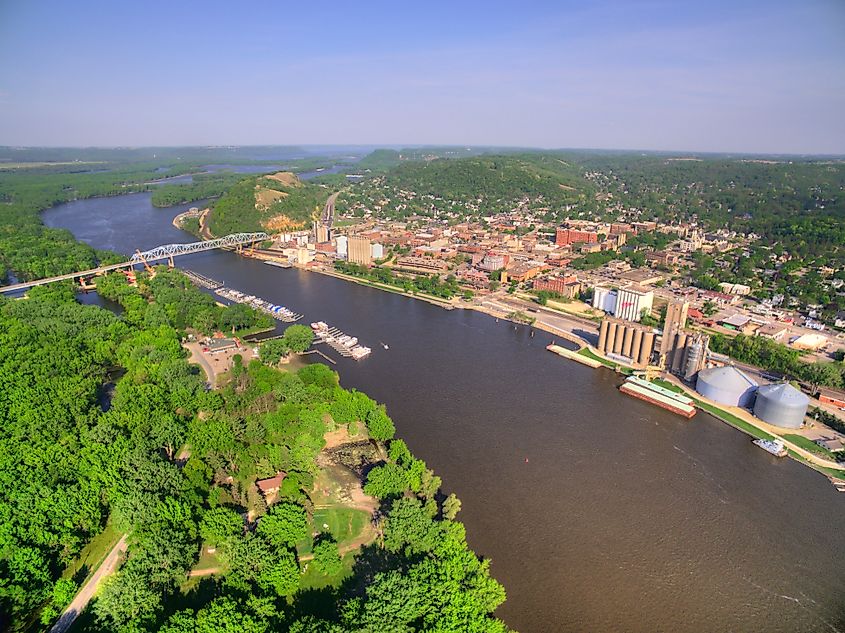
Red Wing, with 16,700 residents, lies south of Minneapolis along the Mississippi River, opposite the state of Wisconsin and just below its confluence with the Minnesota River. Founded in 1858, the town, with its famous, walkable bluff over the Mississippi, takes its name from a Dakota Sioux chief of the early 1800s. The arrival of railroads around 1900 proved decisive for the town's growth, which later became known for its transportation and aviation industries. The Red Wing Shoe Company is likewise headquartered in the town.
Red Wing keeps a busy schedule of cultural and social festivals, like the River City Days fest held each August, as well as a children's book festival and other events themed with the seasons. The town's diverse museums cover everything from military history and the Red Wing Shoe corporation (with a giant, one-story work boot) to pottery and ski jumping.
Little Canada
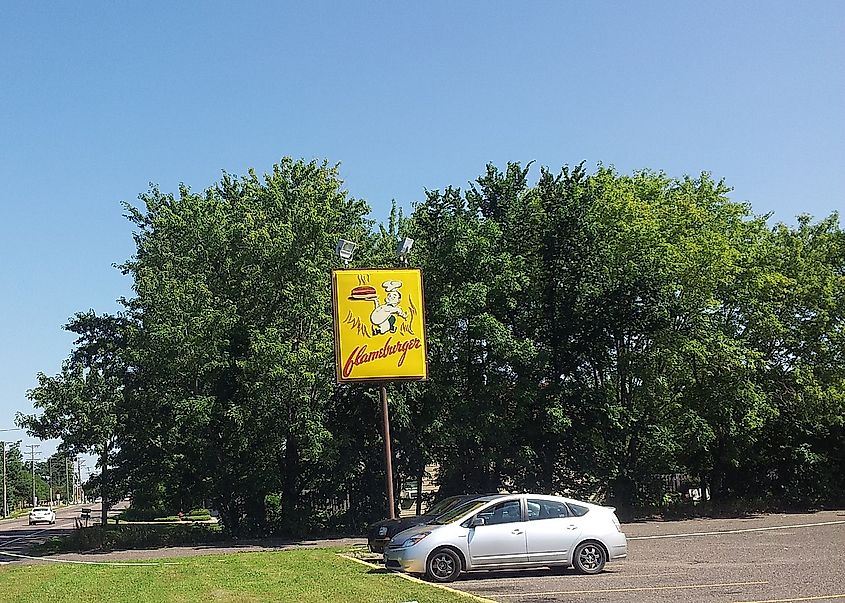
With a name that suggests closeness to the United States' northern neighbor, Little Canada is, in fact, a northern suburb of Minneapolis. With a population of 10,300, the town, founded in 1896, was initially named St. Croix. Little Canada blends charm and respect for the past, and its Victorian Village is a historic, well-preserved area with art galleries, restaurants, and boutiques. In summer, outdoors lovers like to go tubing down the nearby St. Croix River. Every August, the city holds the annual celebration of Canadian Days in coordination with its twin city, Thunder Bay, Ontario, which is found in Canada proper. The town's historical society keeps the flame of the past alive, and visitors can follow the society's suggestion of a walking tour to soak up the local "History Walk" guided itinerary.
Chanhassen
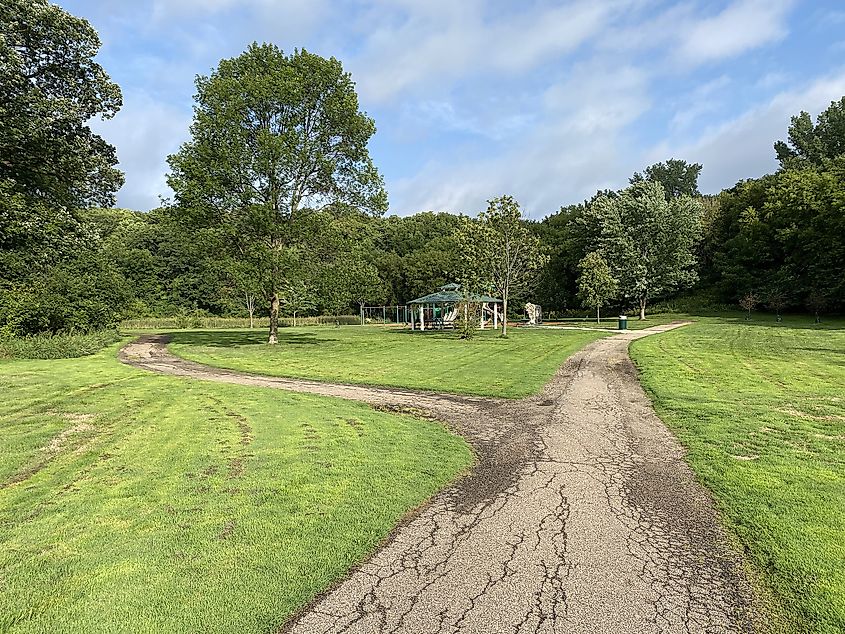
Chanhassen, with 26,200 residents, is a quaint town in east-central Minnesota and an outer southwestern suburb of Minneapolis. Music fans may recognize the town as the home of former R&B legend Prince, where he lived and operated his music studio at the Paisley Park complex. Nature lovers will enjoy the five public beaches in Chanhassen, including Lake Ann and Greenwood Shores beaches on Lake Ann, Minnewashta Regional Park on Lake Minnewashta, as well as Carver Beach — a six-acre park situated on the shore of Lotus Lake. Chanhassen's lakes likewise offer abundant options for fishing, including for the large local trophy species, northern pike.
Stillwater
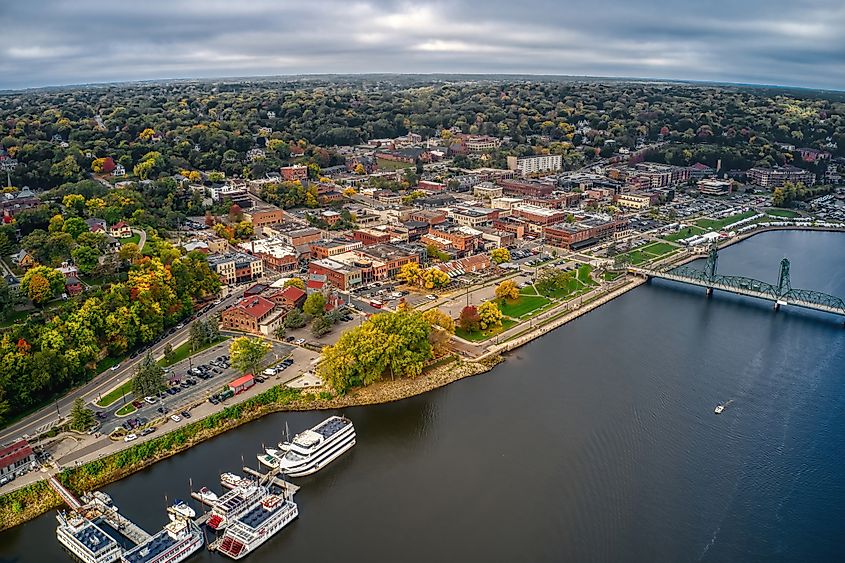
Found along the scenic St. Croix River, Stillwater, population 19,300, provides abundant natural beauty and charming local histories. It lies just across the river from Wisconsin, like Little Canada, and also like that town, Stillwater's downtown is known for its historic Victorian architecture. The Stillwater Lift Bridge, a now-famous symbol of the town's industrial innovation and growth that was completed in 1931, only enhances its interest for history-loving tourists. In other industrial firsts, the pop-up toaster oven was invented in Stillwater in 1921. Nature seekers should opt for river cruises and water activities on the St. Croix for a slice of nature and a nod to the town's river-based past economy. The town's annual festivals, like its German-themed Christkindlmarkt, mark the seasons in style.
Pipestone
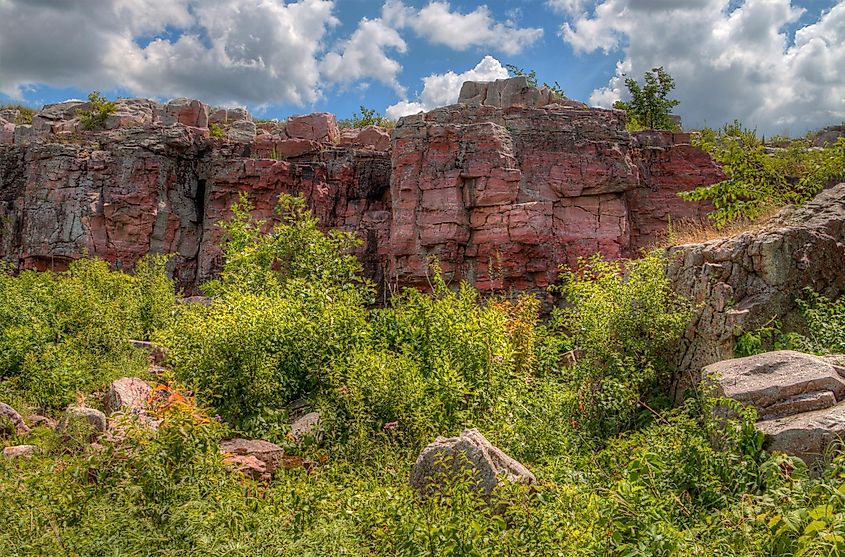
Pipestone, with a more modest 4,200 inhabitants, lies on the banks of the Cannonball River in Minnesota's southwest corner near South Dakota. The town takes its unusual name from a locally abundant type of stone that Native American tribes initially used for tools like pipes and other implements. Visitors can catch a glimpse of this Indigenous history at the Pipestone National Monument. For a town so small, Pipestone punches above its weight for green spaces: local parks include Leon Moore Park, Westview Park, and the Pipestone Family Campground. For a slightly more active time outdoors, the Pipestone Country Club provides nine holes of bliss for golfers of all abilities.
Winona
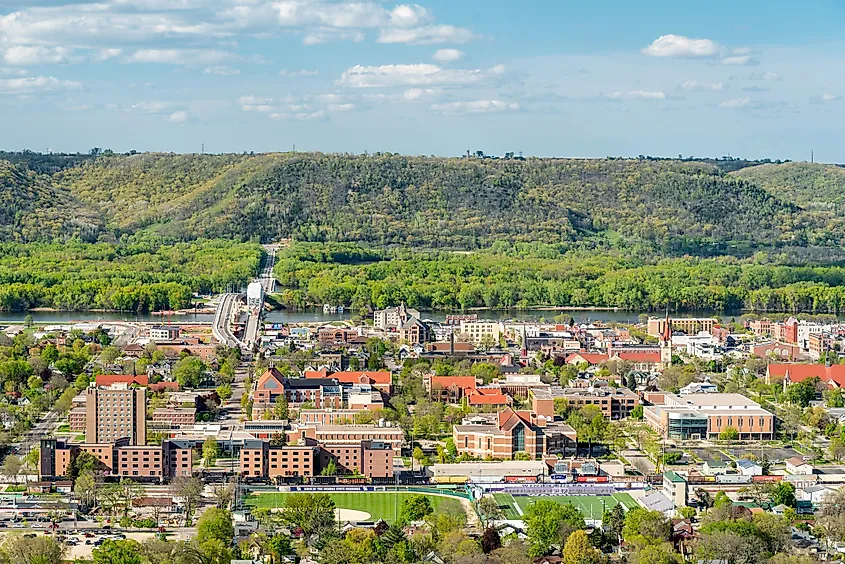
Named after a Native American princess and local legend, Winona was first settled in 1851. The Mississippi River town, with 25,800 residents, calls itself "the Midwest's best autumn playground," and given its diverse amenities, the slogan might just be right. Like Stillwater, Winona boasts a historic rail bridge, first completed in 1870 but decommissioned by 1977. A college town, Winona is home to Winona State University as well as St. Mary's University of Minnesota. Its cultural offerings include the Minnesota Marine Art Museum and the Polish Cultural Institute and Museum. For fresh-air seekers, the town has everything from the Prairie Island Campground on the Mississippi to activities like yoga, canoeing, and rock climbing. Lake Winona, a green space in the heart of downtown, offers some natural respite from the grid-style urban core.
Ely
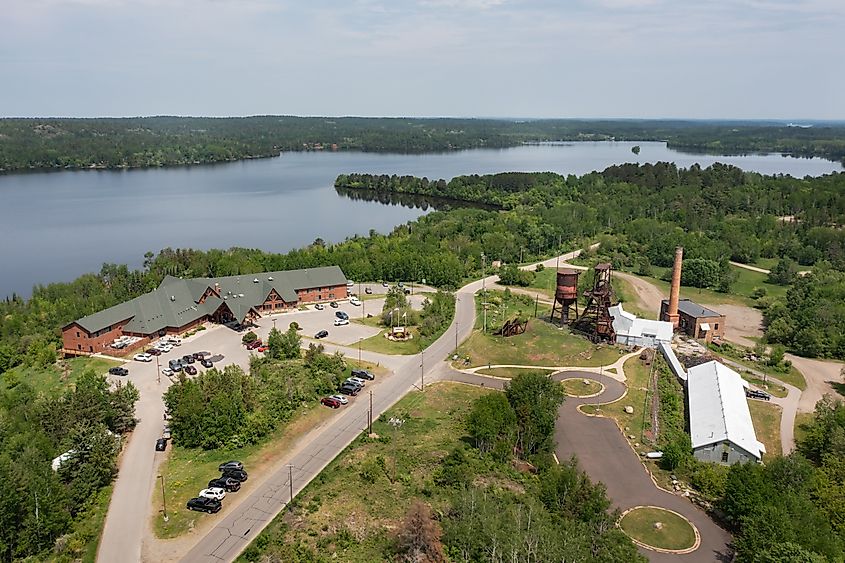
Ely, with a population of just 3,200, sits in the northeast corner of Minnesota in the sparsely populated Saint Louis County, which borders Canada. The town, whose name is pronounced "Ee-lee," lies near Lake Superior as well as the Canadian border. It used to attract miners and industrialists who were active in the Iron Range copper and mineral extraction industries. Today, Ely is a popular jumping-off point for canoeists and other nature seekers who aim to explore the Boundary Waters Canoe Area Wilderness, known by its shorthand, the Boundary Waters, a one-million-acre forest and lake region.
For fun in town, Ely offers a busy downtown area, with several outdoor outfitters along Sheridan Street, the town's main thoroughfare, which features the Pioneer Hotel, a historic structure first built in 1887. Animal lovers should make a detour to Ely, whether for the town's International Wolf Center, which opened in 1993, or the North American Bear Center, a new facility operating only since 2007. Tourists can visit both sites.
Quaint Towns And Natural Wonders Live In Minnesota
Given how much Minnesota contains, its small towns make a vibrant example of the state's best qualities. Its college towns like Winona and its forest-and-lake zones from Walker to Ely suggest a richness that few other states can match. Likewise, for those who prefer culture and history, the quaint towns of Red Wing and Stillwater show that Minnesota's refinement lives not only in the state's natural spaces. Whatever a traveler's tastes, and whether on a first-time visit or an often-repeated journey, the quaint small towns of Minnesota are sure to please visitors in the future.











